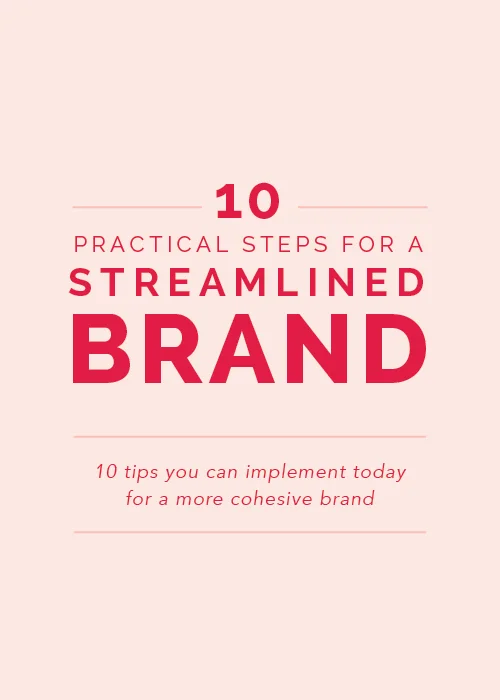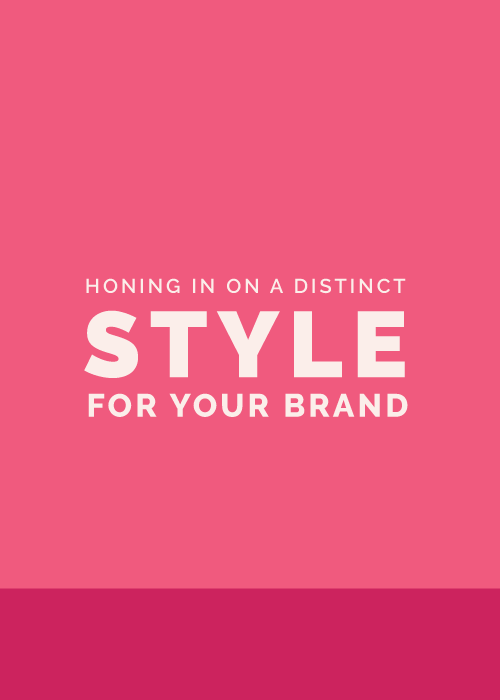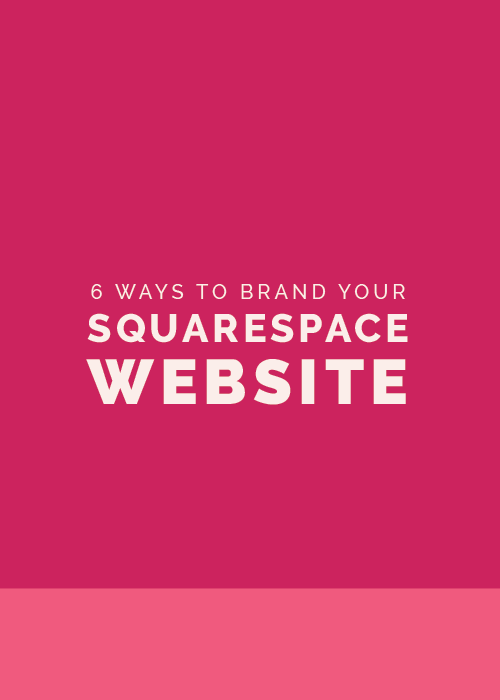Most bloggers and entrepreneurs don't have trouble recognizing why branding is important; they have trouble knowing where to start. Last week I covered the why of branding, but today I'm getting practical with the how. Here are 10 steps for creating, refining, and implementing a streamlined brand.
I thought it would be helpful to provide a case study/example as we go along. Since you'll be putting these steps into practice on your own, I'm sharing how I streamlined the Elle & Company brand.
1 | Write your mission statement
Your mission statement defines the purpose of your business/blog. It's foundational; every branding decision you make should stem off of those 1-2 sentences. The types of services you offer, the tone of your business, the logo you choose, the colors you use - all of it should align with your mission statement.
Here's a look at Elle & Company's mission statement: "Elle & Company is a blogging and design resource for creative entrepreneurs." Whenever I'm making a business or branding decision, I always make sure that it aligns with this purpose.
I encourage you to do the same. Spend some time coming up with a concise statement that captures the purpose of your business. Write down key words, think about what makes your business different from similar businesses in your industry, and highlight it in your statement. It may not come easily or overnight, and that's okay. This step is foundational, so it shouldn't be rushed or overlooked.
2 | Define your ideal audience
Like I said last week, your brand is less about you and more about attracting your ideal customer. In order to attract them, you must first define them. What age are they? What gender? What is their occupation? What is their income level? What are their interests? The more detailed you are in your description, the more you will be able to zero in on that niche and appeal to them through your brand.
Elle & Company's ideal audience is women business owners and bloggers between the ages of 22 and 40. That ideal audience is the same for my blog, my Library, and my design services because all three of those outlets stem from my mission statement.
3 | Develop your tone
Your tone is an intangible component of your brand that is often overlooked. While much attention is given to the visual aspects of a business or blog, not much attention is given to a brand's voice. In order to streamline your brand, each component and detail - both visual and non-visual - needs to be considered. Would a sophisticated, professional tone or a slightly sarcastic tone be more appealing to your ideal audience? Does a friendly, encouraging tone fit your business or is a blunt, bold tone align better with your mission statement?
Because I'm trying to appeal to lady entrepreneurs and bloggers with helpful content and resources, I try to keep Elle & Company's tone friendly, approachable, informative, and professional on social media, in blog posts, in emails, and during client meetings.
4 | Create an inspiration board for visual reference
Inspiration boards are useful for determining the visual direction of a brand. They act as a guide as other tangible elements are designed, and I they help with brand consistency. For learning more about the benefits of inspiration boards and how to create them, visit Tuesday's blog post, How to Create a Clean & Consistent Inspiration Board.
I'm almost embarrassed to admit this (especially since I'm such a big proponent of creating an inspiration board at the start of a design project), but I never officially created an inspiration board as I was designing the Elle & Company brand. However, I did compile inspiration in a secret Pinterest board and I tried to mirror the clean, colorful, and classic aesthetic of the images that I pinned.
5 | Create/refine your logo.
The logo is the step where many business owners and bloggers get stuck. It's the component of branding that usually comes to mind first, and it makes a large impact on the way your audience will recognize and identify your brand. While I don't have an across-the-board formula for coming up with the perfect logo for any blog or business, I did share a couple characteristics of iconic, memorable logos in this blog post.
For the Elle & Company logo, I wanted a logo that was scalable and versatile. I also wanted it to be something classic that could transition with my business over time.
6 | Streamline fonts, colors, photos and brand elements
Consistency is the key to developing brand recognition and loyalty. By repeatedly using the same visual elements, your audience will begin to identify and associate them with your business, even if they don't see your logo. Spend time nailing down your brand's colors, fonts, photos, graphic and illustrative styles, patterns, etc. and carry them out across all platforms.
For Elle & Company, my main brand colors, typefaces, and image styles are the same on my blog, social media platforms, and collateral material.
7 | Set and maintain brand standards
It's also important to set both tangible and intangible guidelines for your brand. Make a list of categories (logo, colors, tone, images, etc.) and set your parameters for each one in detail. This is especially helpful if you have more than one person working with you so that your brand can maintain consistency. I've also found it helpful to include both what to do and what not to do.
For example, the Elle & Company logo can only be seen in black or white. I set this brand standard from the beginning to maintain Elle & Company's classic, timeless direction, so you will never see my logo in pink or teal or gold. You also won't see dark, edgy images on my blog, website, or social media platforms because they don't reflect that friendly, personable, professional tone that would attract my ideal audience.
8 | Develop your brand strategy
Your brand strategy is how, what, where, when and to whom you plan on communicating and delivering on your brand messages. Focus most of your time and energy on those social media platforms that are the most appealing to your ideal customer. Nail down where your focus should be and think through your tone and your approach to those platforms.
For example, Elle & Company focuses most on the social media marketing platforms that 22 to 40-year-old businesswomen are most active on and interested in: Instagram, Pinterest, Bloglovin’, and Twitter
9 | Make a list of steps for your workflow and client experience
For your brand to be effective and streamlined, it must be carried out consistently across all points of contact with your audience. List out your workflow and client experience in detail and think through how each step can reflect your brand. Business cards, email signatures, client gifts, thank you notes, blog post graphics, return address labels, pricing guide PDFs, invoices, contracts, Facebook cover images - all of those aspects should be considered as you're streamlining each element of your brand.
Here's a look at how I branded some of the points of contact that Elle & Company has with clients and readers:
10 | Stay consistent
Changing up your branding every couple years can be a hindrance to growing brand loyalty and increasing recognition with your audience. Stay consistent with your tone, visual direction, colors, patterns, typefaces, brand standards, and photos and your brand will become more professional and streamlined in no time.
What are some tips that you've found helpful for creating a streamlined brand? Are there any steps in this list that you hadn't considered before?










































